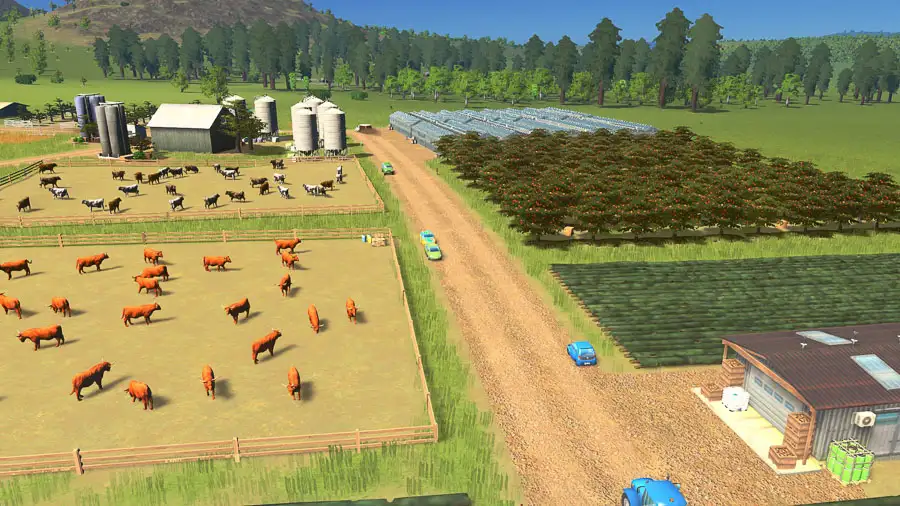
Cities: Skylines Industries launched a week ago, marking the seventh major DLC added to the game. As you’ll know if you’ve read my articles about the Supply chain and cargo trains, I already enjoy the way the game handles industry, but I always felt there was scope for more depth and control. It looks like I got my wish!
Overall, I’m impressed. More than three years in and Colossal Order are clearly not running out of steam. This expansion builds on good existing systems and adds new ones. It’s also a very visual update - a lot of the new buildings are truly enormous. Huge smokestacks, pits, greenhouses and pastures dominate areas and skylines.
The Plus version of the pack includes Synthetic Dawn, a new radio station that I’m enjoying. I think Gold is still my favourite but I’m trying to broaden my musical horizons!
The free stuff
As always, the paid expansion launched alongside a free update. The big features are toll booths that discourage traffic on certain roads and generate income from the vehicles that pass through, and historical buildings. Each upgradeable building now has a toggle that lets you hold its current appearance even if it upgrades. That means you can avoid the biggest towers spawning without forgoing the tax benefits of maxing out your areas.
Drawing industrial areas like Parklife parks
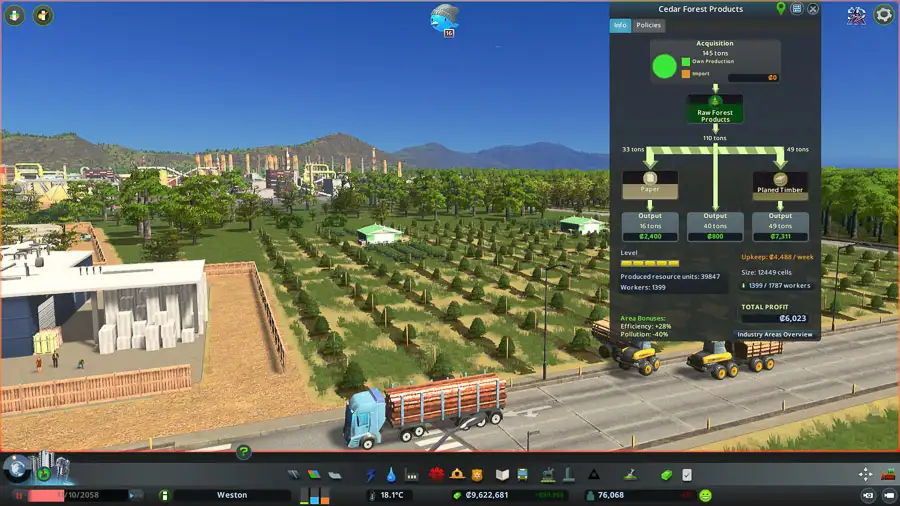
The industrial areas build on Parklife’s systems, letting you hand-place industrial buildings rather than zoning them. Each area has five levels and upgrades just like a park.
Levelling up requires passing two thresholds: enough workers and enough production. When you build new industrial buildings workers will gradually arrive. As they do, production ramps up. Enough of both will see you unlocking new buildings until you max out.
Every new building has live, detailed information about what it needs, what it has and how efficiently it’s working. Services buildings and policies offer ways to push up production and as areas level up they produce less pollution. These new areas are owned by the city. They don’t pay taxes but instead give you the profits.
Money-making industrial towns
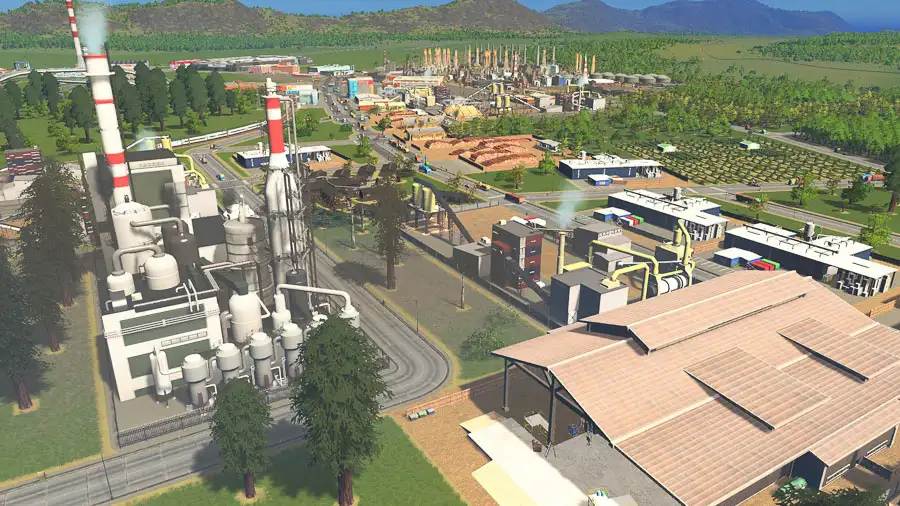
I like building clean, green, low-impact cities. But I also like heavy, gritty industrial towns. The Industries expansion gives us a really satisfying way to play. Although industrial towns are certainly possible without it, they get a bit samey. There’s not much you can do aesthetically, not a lot of management and not much financial incentive either. Now, we’ve got all three.
Speaking of money, it’s possible to earn a serious income from the new areas. I sometimes found specialised industries cost more in fire services than they earned. I’d still put them up, but having a fully industrial city be financially viable is excellent.
As well as all the extractors and refiners, there are sixteen Unique factories. They need increasingly complex mixes of products that need to be gathered from all around the city. When they’re up and running they’ll make valuable products that can be exported for a lot of money, or sent to commercial areas within the city.
Options, detail and micromanagement
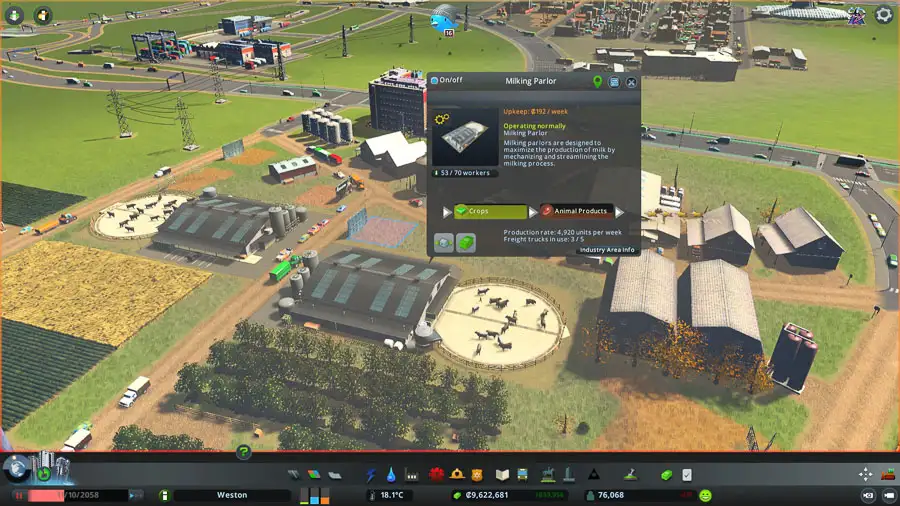
There’s a huge number of new buildings and even more assets. Put down a simple Medium Fruit Field and choose whether it grows apples, oranges, pears or puts up a greenhouse. Functionally they’re the same, but visually distinct. The same applies to trees, letting you choose an appropriate style for the city and map.
The new Warehouses let you choose what they store, and whether they should prioritise distribution, stockpiling or selling their goods. They can also be used for the products of zoned industry. They’re useful for product distribution.
As I said before, I’m really pleased to see the Parklife expansion’s district drawing and upgrading systems getting used here. They work well and force you to build an area up rather than have all the tools available at the outset.
Excellently, it’s now possible to see estimated production yields on buildings as you place them. Move them around to find the maximum value (like wind turbines). That detail is extended to the new panels that give a ton of new insight into what’s happening in the city.
I think the devs have added about the right level of detail and micromanagement. Other city builders put a lot more emphasis on supply chains but that’s never been what Cities: Skylines is about. I feel as though the tools for control, insight and organisation are deep enough to be worthwhile without being onerous.
Old industries and new industries
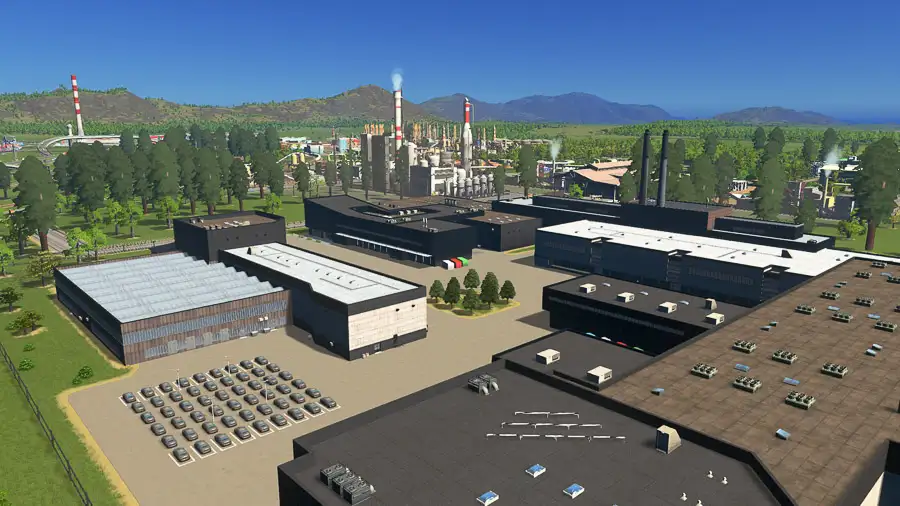
In my preview, I wondered how the new industries would relate or integrate with what’s already in the game. And in general, they exist separately, but certain production does pass between the two. Spare goods can be sold to the corresponding zoned industry, or exported, and raw agricultural produce from farms can be sent to Unique factories such as the bakery (thanks to my friend Glitcher for spotting that - I didn’t notice originally).
Other intersections including goods from Unique factories making their way to your commercial areas, the same as generic zoned industry.
Imports and exports
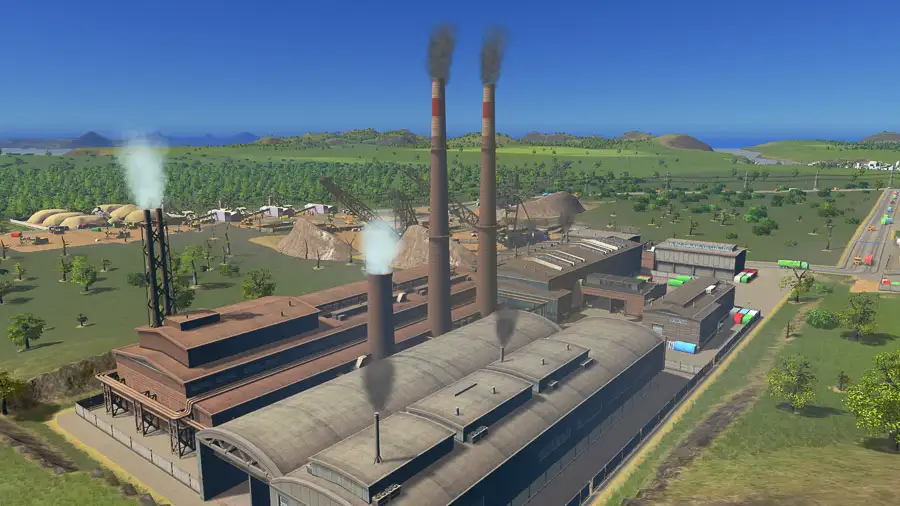
Although industrial areas can’t import from zoned industry, one industrial area can export to another - so oil rigs off the coast can supply another oil area elsewhere in the city.
Importing raw materials is quite expensive, so there’s a clear incentive to produce as much locally as possible. Oil and ore areas make a lot of money, and they need to, because once you’ve dug it all up it’s gone. After that, the city will be dependent on imports.
It’s not all about production, though. Often you’ll have loads of oil in storage but see that buildings are still importing from outside the city. That usually suggests an inefficient cargo network - stuff isn’t getting to where it’s needed.
There’s a deeper focus here not just on smooth traffic, but on actually getting products delivered in time. That’s a level of traffic management we’ve not had much of before. Warehouses and storage yards also have a big role to play. It all adds a welcome extra challenge and requirement for thinking, planning and testing.
Airports, maps and post
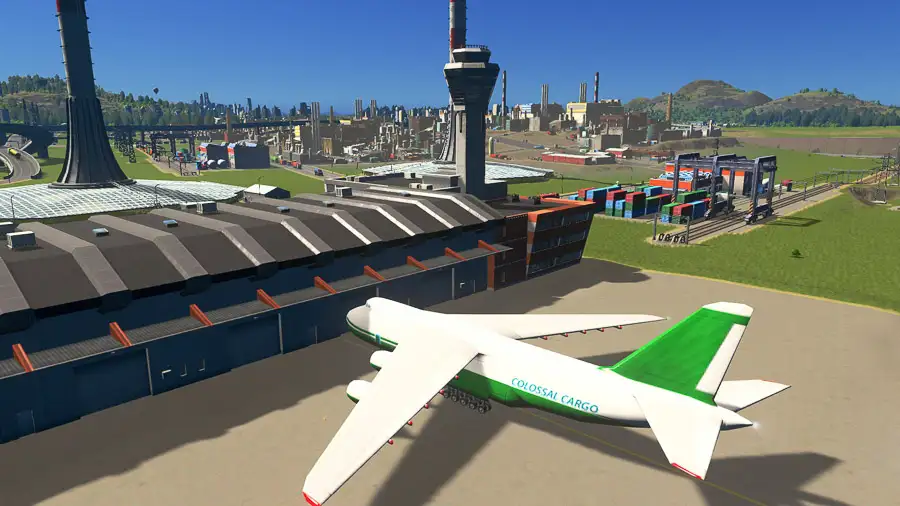
The cargo airports are a fantastic addition. As long as there’s enough room to place it, it’s like dropping a shipping lane exactly where you need it. And by adding the hub airport with the integrated train station, Colossal Order made me extremely happy! I love that building. It also makes the roads around the airport vastly more efficient. On a small note, cargo trains are more interesting now, pulling cargo-appropriate cars like oil tanks.
The DLC adds five new maps that include plenty of resources and some nicely challenging geography like Twin Fjords. I’m looking forward to building a new industry-focused city on a Boreal map where I think the aesthetic will look fantastic. I like that one especially because a combination of coasts, rivers, hills and mountains make for more realistic cities that look like a product of their environment. I also spy a brilliant place for a nature reserve.
The post office city service is certainly not vital but I like it. Individual post offices are supported by a central sorting office. Each local building has a wide effect radius and adds to city happiness. It’s a fairly small addition but like taxis, it adds variety, life and a bit of authenticity to the city.
Industries Review: Is It Worth It?
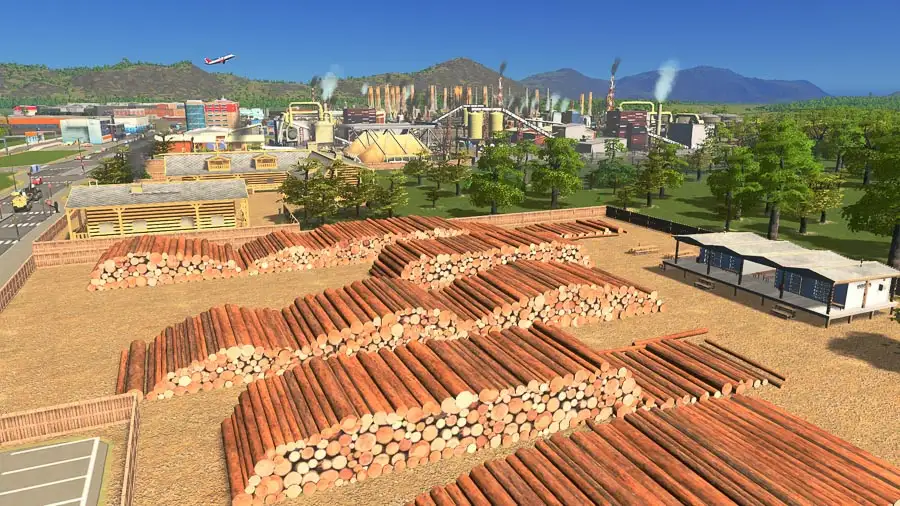
Ironically, it’s the sheer size of a lot of the new buildings that means I’m not certain about the expansion’s longevity. Whereas expansions like Mass Transit make themselves felt in every city and I build Parklife parks all over the place, it may be that Industries’ additions get brought out less frequently.
That said, it’s very possible to just build small-scale forestry and farming areas on the edge of the city. I could see myself using the new areas almost exclusively, but I’m looking forward to playing for longer to see how it all beds in.
Ultimately, Industries is a weighty expansion that addresses one of the game’s thinner systems in a satisfying way. It gets my enthusiastic thumbs up.
Thanks for reading! If you found it useful and you end up buying Industries, you can support the site by using one of my affiliate links: Humble Bundle. So you know, I bought the expansion (I didn’t have a review copy). Thanks so much!